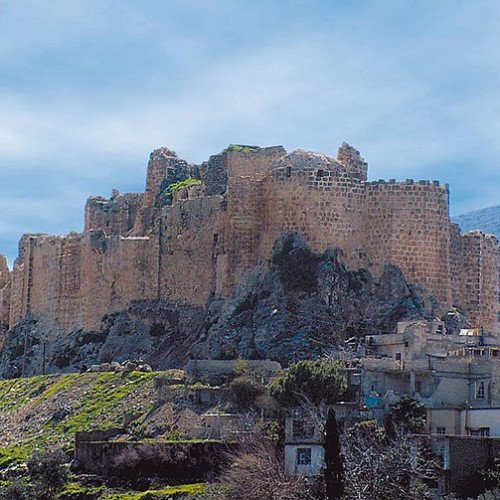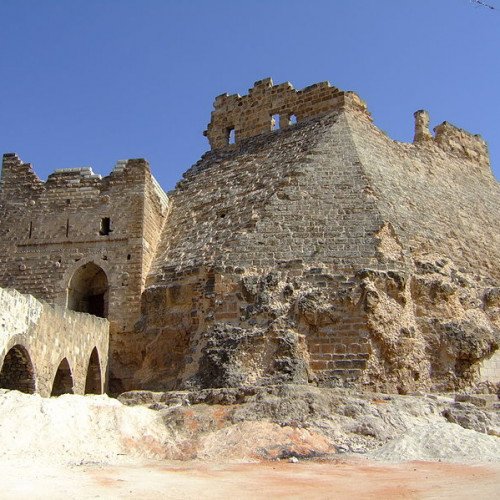Castles of "Syria" MASYAF CASTLE vs SHAIZAR

MASYAF CASTLE
Masyaf Castle (Arabic: قلعة مصياف) is a medieval structure in the town of Masyaf in Hama Governorate, Syria, situated in the Orontes Valley, approximately 40 kilometers to the west of Hama. It served to protect the trade routes to cities further inland such as Banyas. The castle itself stands on a platform about 20 meters above the surrounding plain. The citadel became famous as the stronghold from which Rashid ad-Din Sinan, known as the Old Man of the Mountain, ruled from 1166-1193. He was a leader of the Syrian branch of the Nizari Isma'ili sect, also known as the Assassins, and a figure in the history of the Crusades. Evidence suggests that the lower layers and foundations of the castle are of Byzantine origin. Later levels were added by the Nizari Isma'ilis, Mamluks, and Ottomans. The castle was captured by the Assassins in 1141 from Sanqur (who had held it on behalf of the Banu Munqidh of Shaizar) and was later refortified by Rashid al-Din Sinan. Masyaf and the surrounding town functioned as the capital of a Nizari emirate from the middle of the 12th century until the end of the 13th century. Saladin besieged it in May 1176 but the siege did not last long and it concluded with a truce. Current research indicates it was held by the Nizari Isma'ilis at that time. In 1260, the castle was surrendered to the Mongols. Later that year in September, the Nizaris allied with the Mamluks to drive the Mongols out from Syria and reclaim the castle. Baibars took hold of the castle in February 1270. In 1830, an Egyptian expedition led by Ibrahim Pasha did some damage to the castle. Restoration funded by the Aga Khan Trust for Culture Historic Cities Support Programme began in 2000.
Statistics for this Xoptio

SHAIZAR
Shaizar or Shayzar (Arabic: شيزر; in modern Arabic Saijar; Hellenistic name: Larissa in Syria, Λάρισα εν Συρία in Greek) is a town in northern Syria, administratively part of the Hama Governorate, located northwest of Hama. Nearby localities include, Mahardah, Tremseh, Kafr Hud, Khunayzir and Halfaya. According to the Syria Central Bureau of Statistics (CBS), Shaizar had a population of 5,953 in the 2004 census. During the Crusades, the town was a fortress, ruled by the Banu Munqidh family. It played an important part in the Christian and Muslim politics of the crusades. In the Amarna letters (14th century BC) it is mentioned as Senzar or Sezar. To the Greeks it was known as Sidzara, but during the Seleucid empire it was renamed Larissa, after the town Larissa in Thessaly (Greece) from which many colonists came. It reverted to its earlier name under the Roman Empire and was known as Sezer under the Byzantine Empire. The Crusaders rendered the city's name in Latin as Caesarea. This name had not been used in any earlier period, and was derived from the Crusaders mistakenly identifying this city as being Caesarea Mazaca, a place renowned in Christian history as the home of Saint Basil of Caesarea. Shaizar's ruins are known as Saijar in modern Arabic.